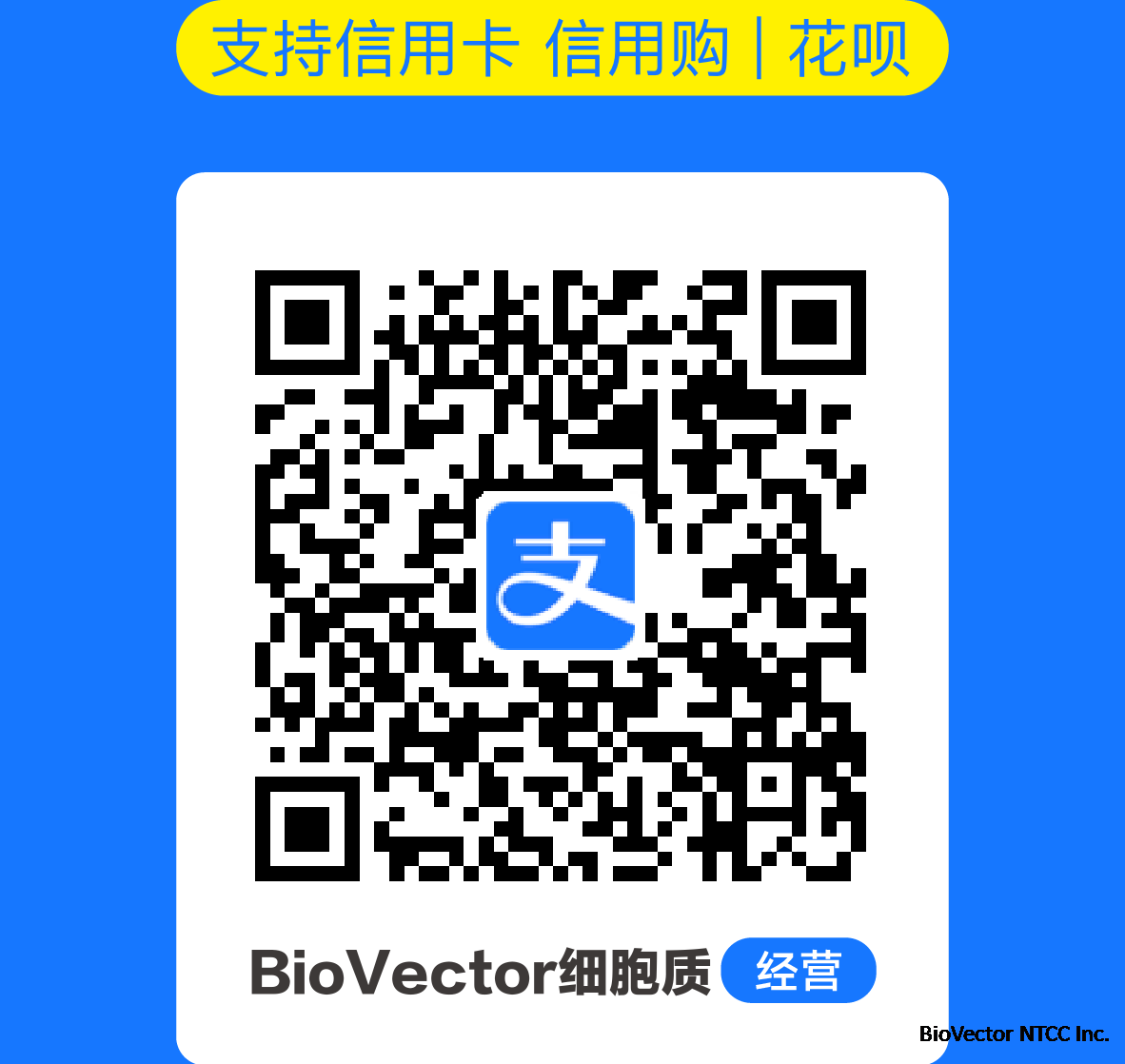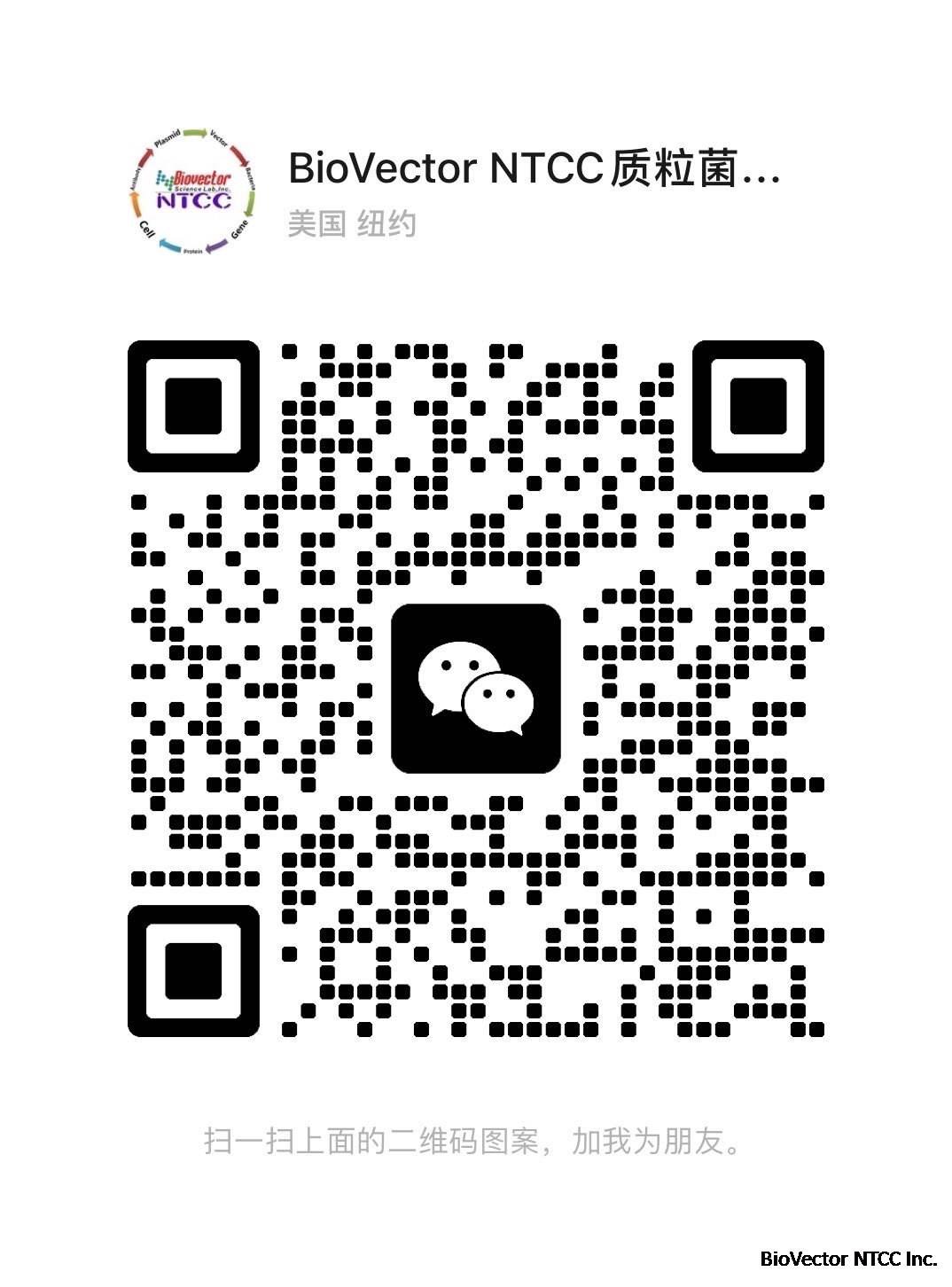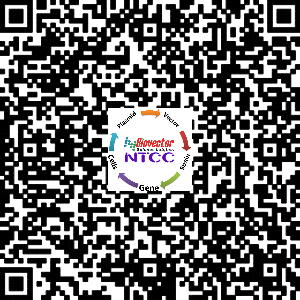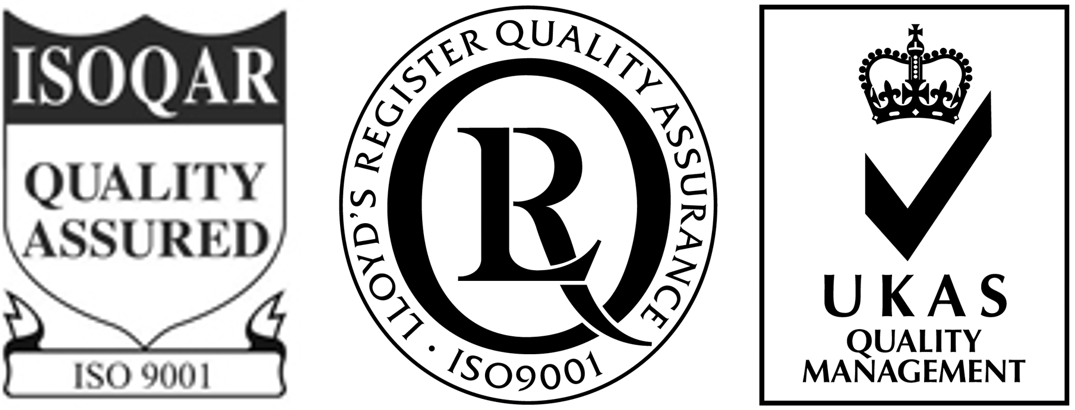pGADT7-Rec2酵母单杂交系统GAL4激活域融合表达载体-BioVector NTCC质粒载体菌种细胞蛋白抗体基因保藏中心
- 价 格:¥17932
- 货 号:pGADT7-Rec2酵母单杂交系统GAL4激活域融合表达载体
- 产 地:北京
- BioVector NTCC典型培养物保藏中心
- 联系人:Dr.Xu, Biovector NTCC Inc.
电话:400-800-2947 工作QQ:1843439339 (微信同号)
邮件:Biovector@163.com
手机:18901268599
地址:北京
- 已注册
pGADT7-Rec2酵母单杂交系统GAL4激活域融合表达载体
BioVector NTCC质粒载体菌种细胞蛋白抗体基因保藏中心
Map
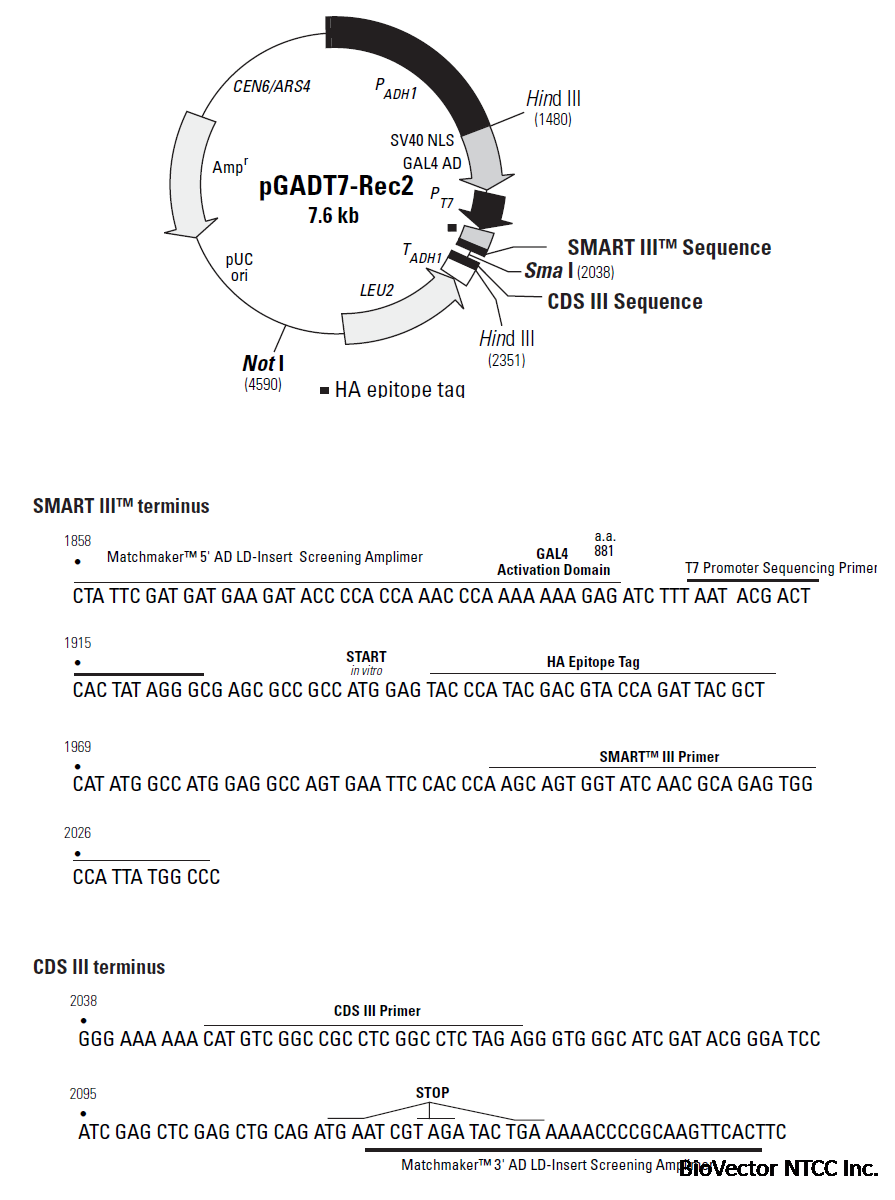
Description
pGADT7-Rec2 is a cloning vector that can be used in yeast to express a protein of interest as a GAL4 activation domain (GAL4 AD) fusion. Transcription starts with the constitutive ADH1 promoter (PADH1) and ends with the ADH1 termination signal (TADH1). The GAL4 AD sequence includes the SV40 nuclear localization signal (SV40 NLS; 1) so that fusions translocate to the yeast nucleus. GAL4 AD fusions also contain a hemagglutinin (HA) epitope tag. The T7 promoter in pGADT7-Rec2 can be used for in vitro transcription and translation of the HA-tagged fusion protein. It also provides a binding site for sequencing with the T7 Promoter Sequencing Primer.
pGADT7-Rec2 is a shuttle vector; it can be maintained in both yeast and bacteria. It contains an autonomous replication sequence (ARS4) and a LEU2 nutritional marker for replication and selection in yeast (2, 3). A centromeric sequence (CEN6) is included to ensure proper segregation of the plasmid during cell division (2, 3). For propagation and selection in E. coli, the vector contains a pUC origin of replication (pUC ori) and an ampicillin resistance gene (Ampr).
pGADT7-Rec2 is derived from pGADT7-Rec, a cloning vector used in the Matchmaker (Two-Hybrid) Library Construction & Screening Kit (Cat. No. 630445). It was constructed by replacing the 2μ ori in pGADT7-Rec with the ARS4 and CEN6 elements. The ARS and CEN elements ensure stable, low-copy propagation of the vector. Unlike pGADT7-Rec, which is able to replicate multiple times during the yeast cell cycle, pGADT7-Rec2, with its ARS and CEN elements, can replicate only once during the cell cycle, so its copy number is restricted. Low-copy plasmids such as pGADT7-Rec2 are preferred for one-hybrid screening because they generate fewer false positives. In the original Matchmaker One-Hybrid System, copy number was restricted not by using low-copy, autonomously replicating plasmids, but by integrating the reporter construct into the yeast genome. With the development of pGADT7-Rec2 (and pHIS2, a low-copy reporter vector), integration is no longer necessary because each plasmid, with its CEN and ARS elements, now behaves like a minichromosome, both mitotically and meiotically.
Use
pGADT7-Rec2 is engineered for constructing GAL4 AD/cDNA libraries by homologous recombination in yeast. To construct AD fusions in pGADT7-Rec2, first generate double-stranded (ds) cDNA using the cDNA Synthesis protocol in the Matchmaker Library Construction & Screening Kits User Manual (PT3529-1). Then transform yeast with the cDNA products and Sma I-linearized pGADT7-Rec2. Cellular recombinases will use the ds cDNA to repair the gap in pGADT7-Rec2 (Figure 2). Successful recombination results in a fully functional, circular expression vector, which confers the Leu+ phenotype to Leu auxotrophs such as yeast strains AH109 and Y187. Transformants should therefore be selected on SD/–Leu medium.
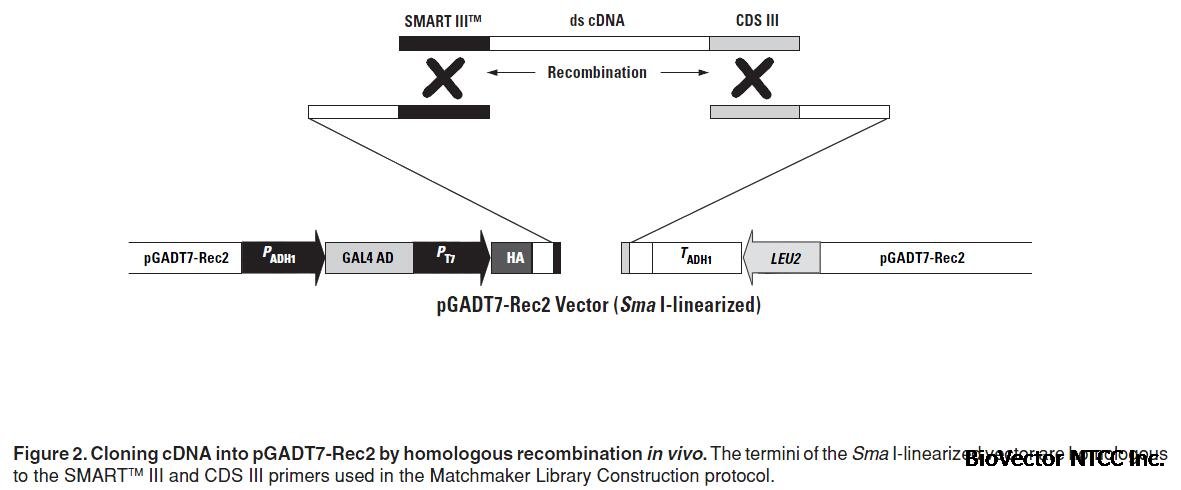
Location of features
• Full-length S. cerevisiae ADH1 promoter (PADH1): 7–1479
• GAL4 AD polypeptide with SV40 Nuclear Localization Signal (NLS)
NLS: 1501–1557
GAL4 amino acids 768–881: 1561–1899
• T7 RNA polymerase promoter: 1905–1927
• HA epitope tag: 1942–1968
• SMART III Oligonucleotide sequence: 2001–2036
• CDS III Primer sequence: 2047–2071
• Transcription termination signal
Fragment carrying the S. cerevisiae ADH1 terminator (TADH1): 2351–2676
• LEU2 coding sequences: 3885–2794
• pUC plasmid replication origin: 4652–5489
• Ampicillin resistance gene: 6505–5645
• CEN6/ARS4 sequences: 7069–7587
Location of primers
• T7 Sequencing Primer: 1905–1925
• Matchmaker 5' AD LD-Insert Screening Amplimer (No. 9103-1): 1858–1889
• Matchmaker 3' AD LD-Insert Screening Amplimer (No. 9103-1): 2148–2117
Propagation in E. coli
• Suitable host strains: DH5α, DH10B & other general purpose strains
• Selectable marker: plasmid confers resistance to ampicillin (100 μg/ml) to E. coli hosts
• E. coli replication origin: pUC
• Copy number: ~500
• Plasmid incompatibility group: pMB1/Col E1
Propagation in S. cerevisiae
• Suitable host strains: AH109(MATa), Y187(MATα), Y190(MATa), SFY526(MATa), CG1945(MATa), HF7c(MATa)
• Selectable marker: LEU2
• S. cerevisiae origin: CEN6/ARS4
Reference
1. Chien, C. T., Bartel, P. L., Sternglanz, R. & Fields, S. (1991) Proc. Natl. Acad. Sci. USA 88:9578–9582.
2. Sikorski, R. S. & Hieter, P. (1989) Genetics 122:19–27.
3. Rose, M. D. & Broach, J. R. (1991) Methods Enzymol. 194:195–230.
- 公告/新闻
